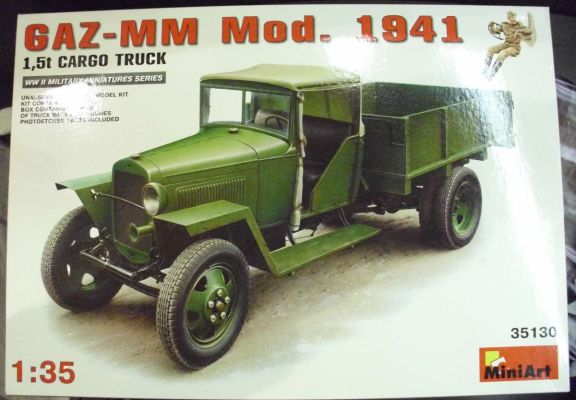
MiniArt 1/35 GAZ-MM Mod. 1941
By Sean Brian Kirby
Overview
In the late 1920s, Stalinist Russia courted the consultancy of the great Capitalist and master of mass production, Henry Ford, with a view towards motorizing the Soviet Union. A contract was signed in May 1929, whereby the Ford Motor Company would offer technical assistance towards the Soviet Union's mass production of license-built Ford Model A cars and Model AA trucks. For the earliest vehicles, Ford would also provide parts. Ford provided vital technical assistance in the building of the enormous GAZ plant in Nizhny-Novgorod on the Volga, the building of which spanned from 1930 to 1932.
The GAZ-AA was largely identical to its Ford counterpart. Production of the GAZ-MM commenced in 1941. Its simplified construction featured reduced usage of strategic materials. Wartime modifications included omission of the right-side headlamp, front brakes, and bumper, a rudimentary doorless cab with the metal roof replaced by canvas, a bed that only opened from the back, and a more powerful engine. Overall production of all AA-based variants totaled nearly one million units.
The Kit
By now, we all know MiniArt is pretty good at kitting 1:35 scale military miniatures. Their kits are known for their crisp detail, and their figures tend to be very finely sculpted. Still, this kit does not fail to be full of pleasant surprises.
The box features a vibrant and very attractive painting of the truck itself, its simple folded and welded fenders to the fore, with minimal background. Depicted in the upper right corner of the box front is the more relaxed of the two drivers offered in the kit, almost obviously in conversation with someone beside the vehicle.
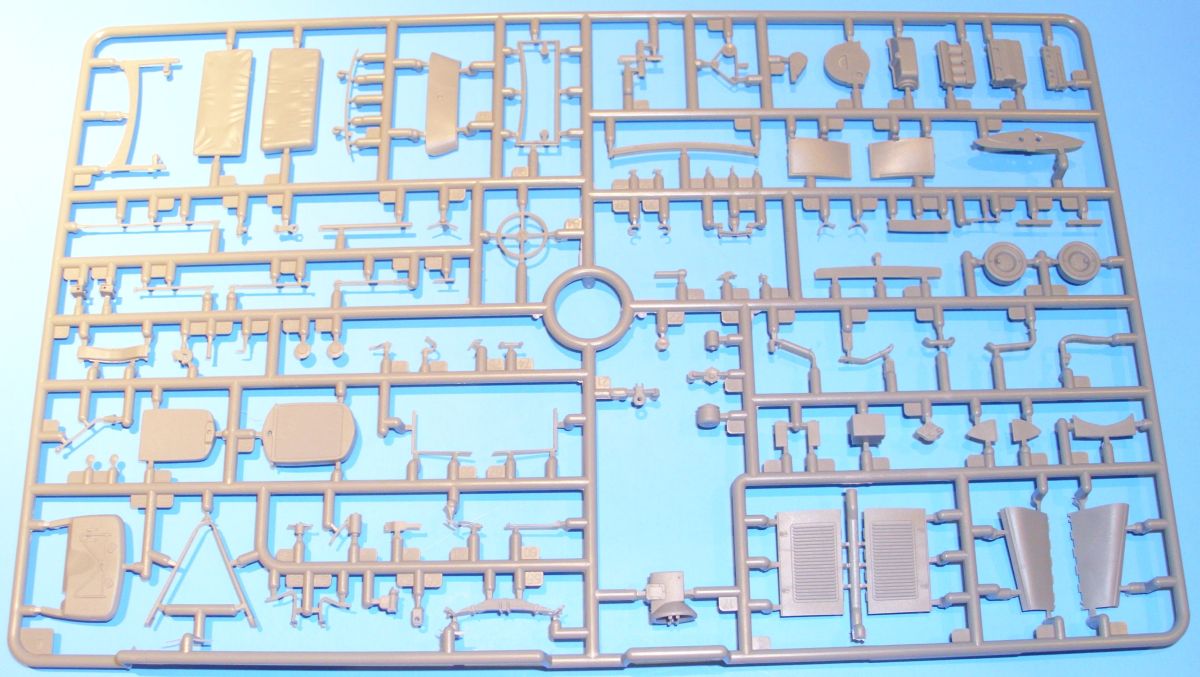 Assembly commences with the 4-cylinder engine, comprised of no fewer than 22 well-engraved pieces. The head is well-detailed, with bolt and petite spark plug detail. The block is in two halves, with a separate oil pan. Intake and exhaust manifolds are individual pieces, while the single updraft carburetor is mated to what appears to be a curved intake pipe and corrugated hose; in a later assembly, a nicely rendered air cleaner attaches to this hose. The well-known early Ford 4-banger ignition is well represented, and attaches to the top of the head. The transmission and mount assembly comes in three parts, with the bell housing and tranny itself molded as one piece. To the front of the engine affix the water pump, belt/pulley assembly with separate generator, radiator pipe (an especially nicely-executed piece for this scale), fan, and motor mounts. On the driver's side are also an oil fill tube, starter with bracket, and a clutch linkage which connects to the side of the transmission. This assembly will stand up beautifully on its own, while the high level of engraving will doubtless inspire many to plumb and detail the engine yet further.
Assembly commences with the 4-cylinder engine, comprised of no fewer than 22 well-engraved pieces. The head is well-detailed, with bolt and petite spark plug detail. The block is in two halves, with a separate oil pan. Intake and exhaust manifolds are individual pieces, while the single updraft carburetor is mated to what appears to be a curved intake pipe and corrugated hose; in a later assembly, a nicely rendered air cleaner attaches to this hose. The well-known early Ford 4-banger ignition is well represented, and attaches to the top of the head. The transmission and mount assembly comes in three parts, with the bell housing and tranny itself molded as one piece. To the front of the engine affix the water pump, belt/pulley assembly with separate generator, radiator pipe (an especially nicely-executed piece for this scale), fan, and motor mounts. On the driver's side are also an oil fill tube, starter with bracket, and a clutch linkage which connects to the side of the transmission. This assembly will stand up beautifully on its own, while the high level of engraving will doubtless inspire many to plumb and detail the engine yet further.
 The frame is a remarkable piece of miniaturization. What can be so special about a 1:35 scale frame? First, the frame rails are molded with the inner surfaces open, not solid, as we typically find on models of any scale. In fact, these rails, the cross members, and so-on, all appear to-scale. The wooden beams that are attached to the upper rear frame have individual U-bolts, and their end plates have fine little bolt ends on them. One will want to show some care in removing these U-bolts from the sprues. Finely molded leaf springs - with a very heavy-duty appearance - attach to the frame with separate shackles. These slide-molded springs are filled with detail.
The frame is a remarkable piece of miniaturization. What can be so special about a 1:35 scale frame? First, the frame rails are molded with the inner surfaces open, not solid, as we typically find on models of any scale. In fact, these rails, the cross members, and so-on, all appear to-scale. The wooden beams that are attached to the upper rear frame have individual U-bolts, and their end plates have fine little bolt ends on them. One will want to show some care in removing these U-bolts from the sprues. Finely molded leaf springs - with a very heavy-duty appearance - attach to the frame with separate shackles. These slide-molded springs are filled with detail.
The six-piece rear truck axle and torque tube assembly has fine bolt detail and the same high level of engraving as everything else. The front axle and suspension consist of nine pieces, including spring, and what is here looks well-suited to be made steerable by the intrepid modeler. The spare is mounted with a separate bracket assembly, even featuring two individual nuts. The tires, in fact, are the laminated type, which should produce a very convincing tread pattern, which mount on their simple but well-detailed wheels. The wheels have separate hubs, and the mechanical rear brakes have appropriately petite details. Everything that should be on the frame is there, all beautifully rendered. Even the mechanical brake rods are there. Wow.
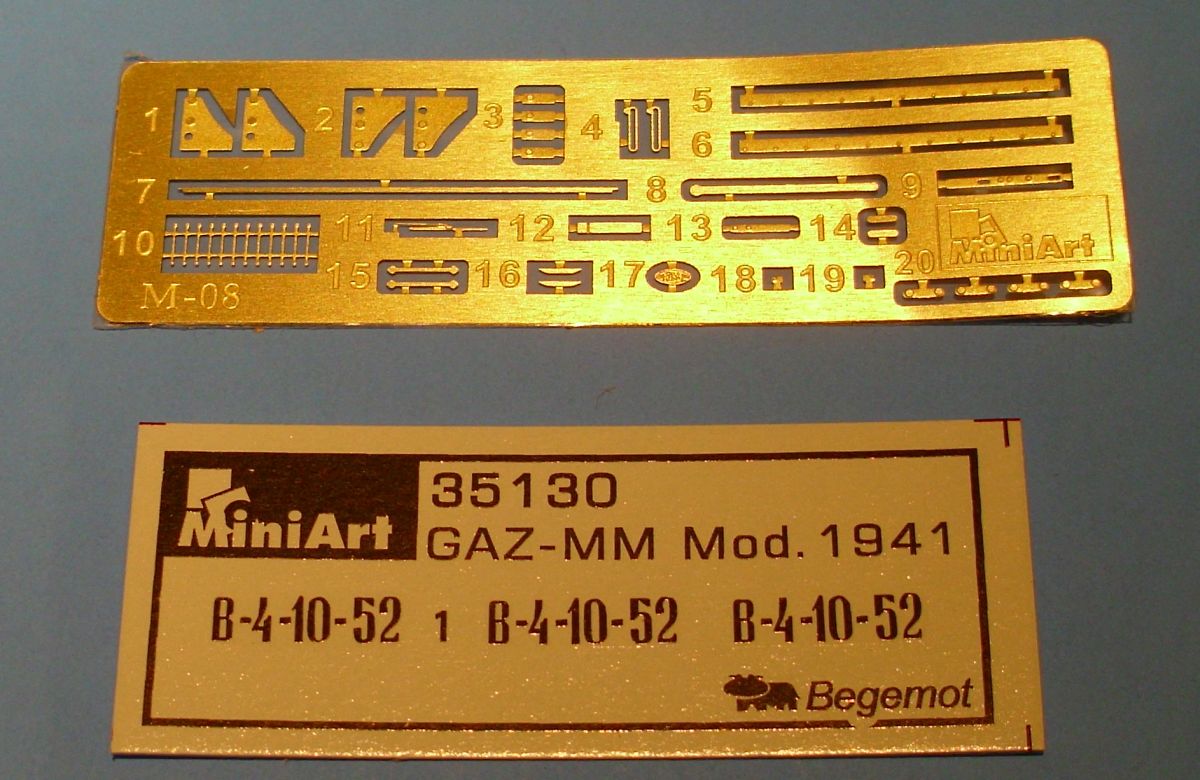 The brake and clutch pedal go through the floorboard and attach to their respective linkages on the frame. The seats have convincing fold and wrinkle detail, and everything that belongs in the spartan interior is there. Practically all pieces that were separate on the vehicle are separate in the kit, and in some cases very petite. Thus some care should be taken when detaching these items from the sprue, cleaning them up, and handling them.
The brake and clutch pedal go through the floorboard and attach to their respective linkages on the frame. The seats have convincing fold and wrinkle detail, and everything that belongs in the spartan interior is there. Practically all pieces that were separate on the vehicle are separate in the kit, and in some cases very petite. Thus some care should be taken when detaching these items from the sprue, cleaning them up, and handling them.
The cab, given the nature of the truck, is a simplified affair. That said, detail here is extreme, and beautifully rendered. A perhaps surprising feature is the separate photoetched metal windshield slides. Additionally, there is a windshield wiper motor, and a windshield wiper of photoetched construction. The cab back and canvas roof have ejector pin marks in them that will require careful filling. Even this canvas top gets photoetched detail on it exterior. Additionally, many other small details of the GAZ-MM's simplified cab are provided in etched brass.
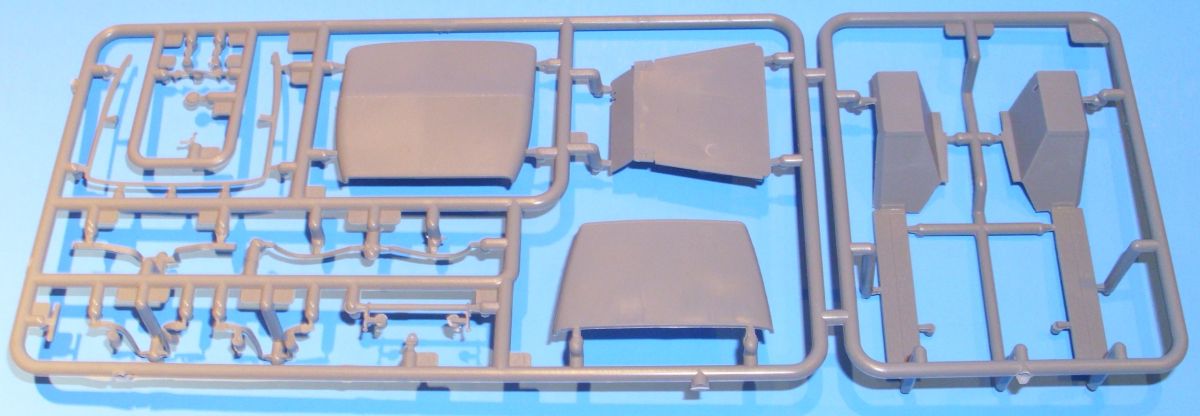 The bed and its supports have finely engraved woodgrain detail where appropriate. The latch detail is very fine. The fenders exhibit fold and weld detail, and have separate frame-mounting brackets.
The bed and its supports have finely engraved woodgrain detail where appropriate. The latch detail is very fine. The fenders exhibit fold and weld detail, and have separate frame-mounting brackets.
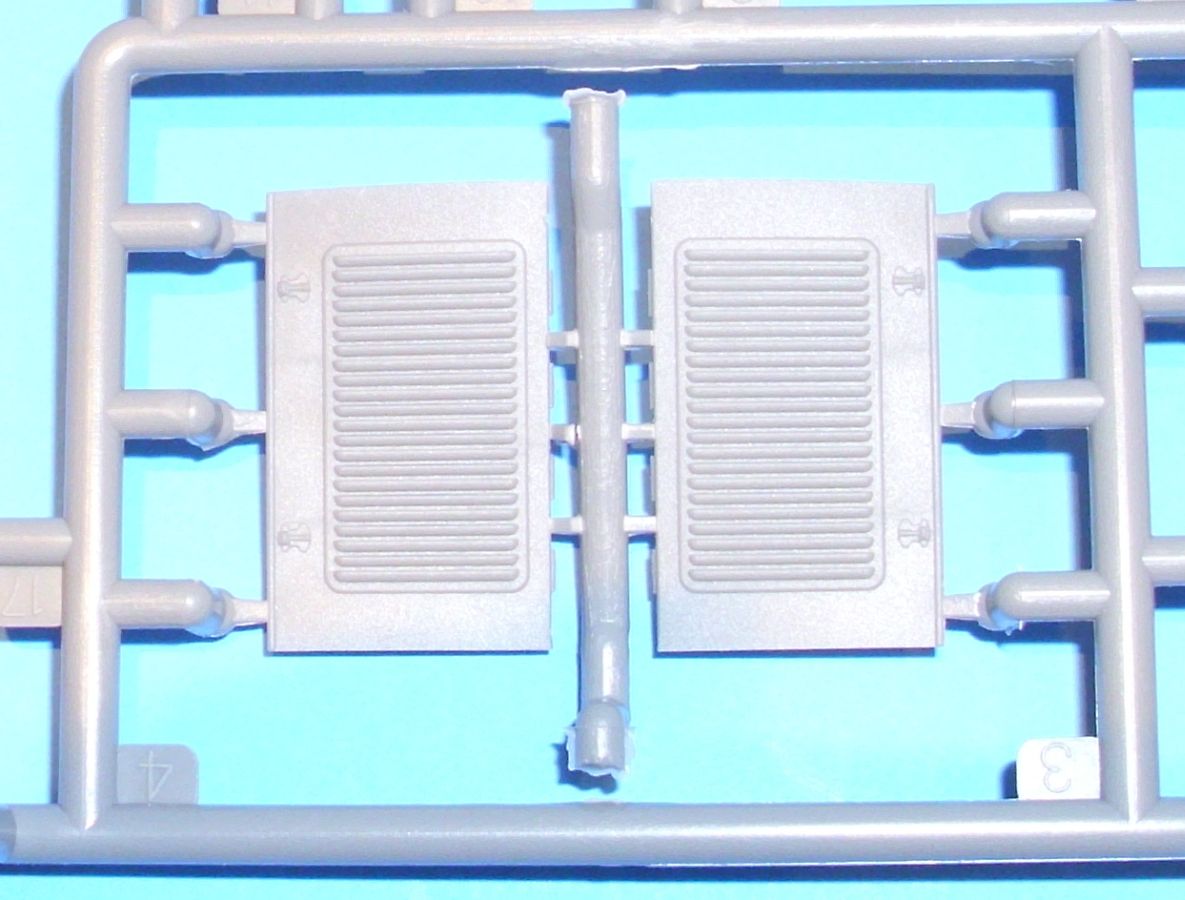 One of the most amazing features of this kit is the hood side louver detail, which is molded open. One will actually be able to view the engine through these louvers upon completion of the model, just as with the real vehicle. This detail alone speaks volumes about the nature of this kit, and the dedication to realism of it manufacturer. There is plenty of individual latch and handle detail for the hood sides, and the single headlight and horn have their own separate electrical wires.
One of the most amazing features of this kit is the hood side louver detail, which is molded open. One will actually be able to view the engine through these louvers upon completion of the model, just as with the real vehicle. This detail alone speaks volumes about the nature of this kit, and the dedication to realism of it manufacturer. There is plenty of individual latch and handle detail for the hood sides, and the single headlight and horn have their own separate electrical wires.
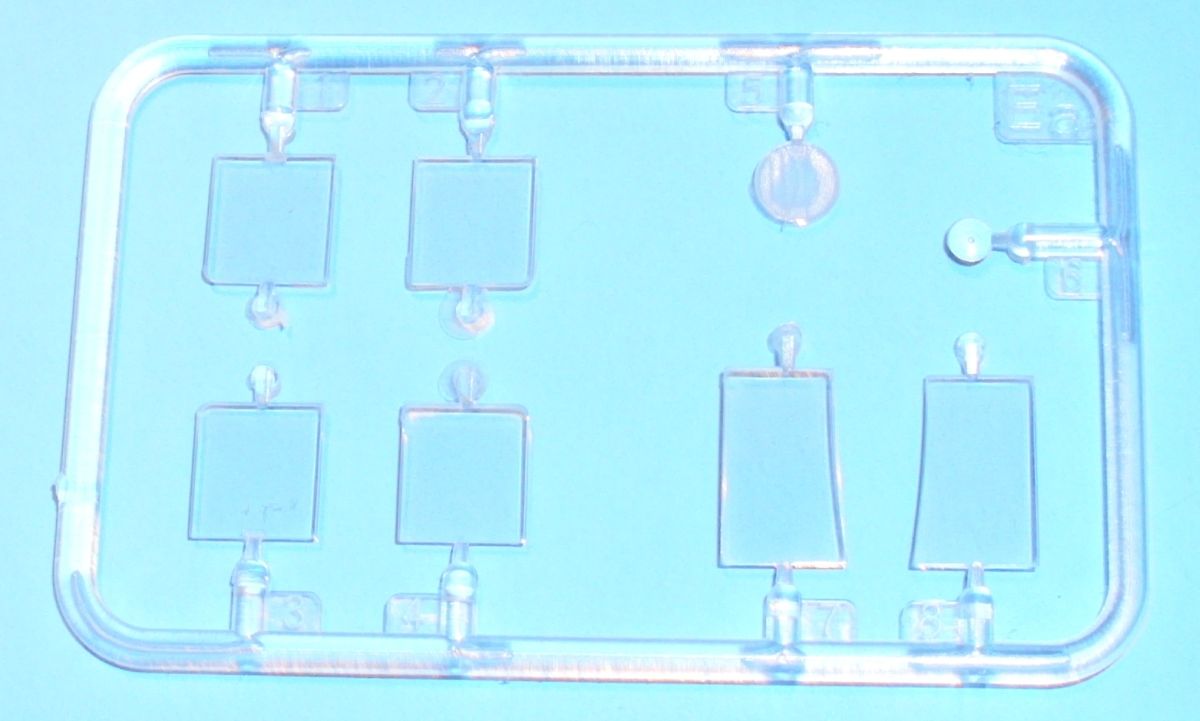 The windows and headlamp lense provided are thin and clear. The decal sheet, by Begemot, is a small one, containing the codes for one of the three recommended camouflage schemes.
The windows and headlamp lense provided are thin and clear. The decal sheet, by Begemot, is a small one, containing the codes for one of the three recommended camouflage schemes.
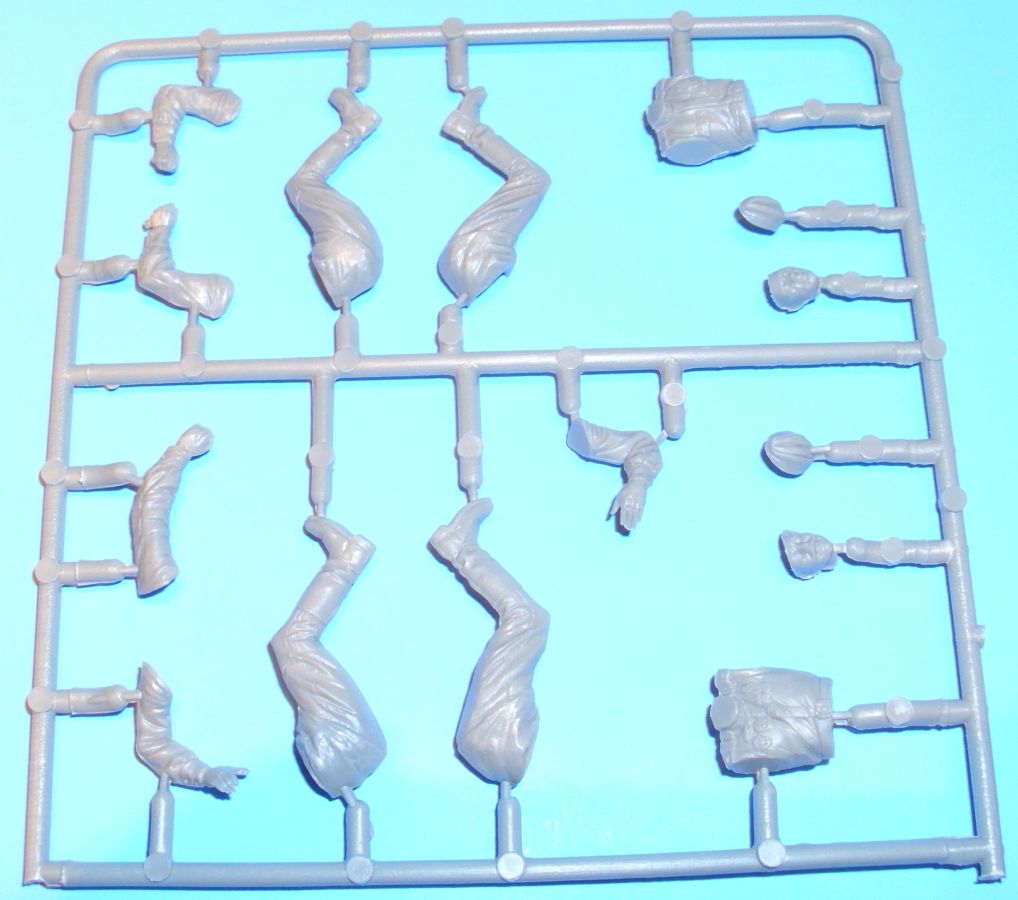 The kit also includes two figures, both drivers, one of which is in a driving pose, while the other appears to be talking to someone beside the vehicle, right hand on the wheel, left elbow resting on the cab side. These figures look to be as nice as we've come to expect from this manufacturer, and two drivers means one spare, which is always nice.
The kit also includes two figures, both drivers, one of which is in a driving pose, while the other appears to be talking to someone beside the vehicle, right hand on the wheel, left elbow resting on the cab side. These figures look to be as nice as we've come to expect from this manufacturer, and two drivers means one spare, which is always nice.
Conclusion
If you are a fan of soft-skin military vehicles, or Russian armor, this kit could be readily labeled a "must-have". The detail is complete and delicately and even artistically presented. There are several trucks by MiniArt in this series, and all of them are doubtless beauties. The execution of this kit is such that it makes MiniArt's using this tooling to make a Ford-AA and other derivatives a most desirable thing, indeed. In fact, seeing MiniArt do Model A-based cars or trucks to this standard in 1:24-1:25 scale would please many a car modeler greatly. But for now, we have these terrific kits, and if they're as fun to build as they are detailed, then building them is going to be a treat. My thanks to MRC for the review sample.
